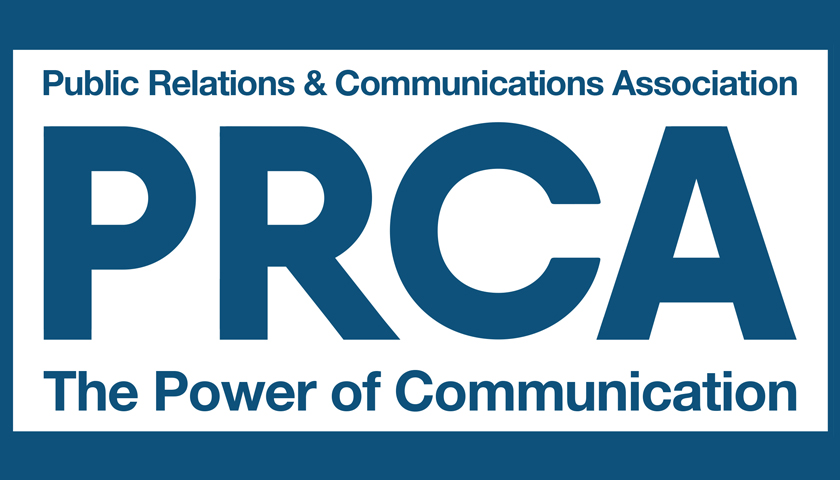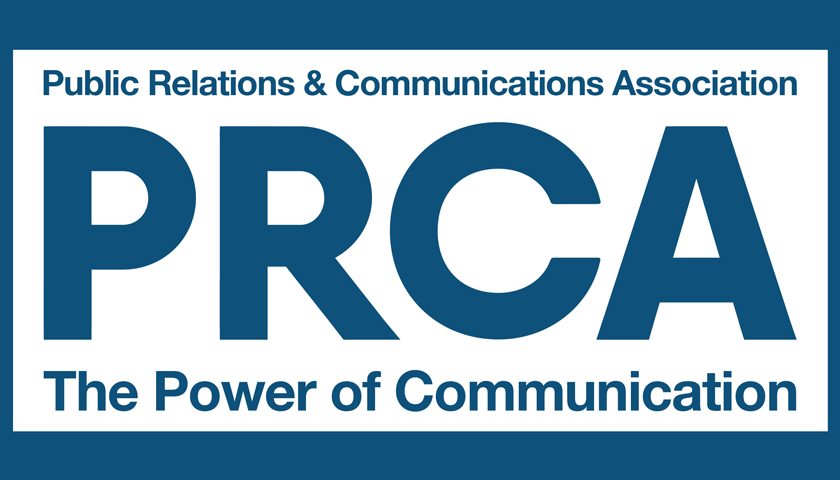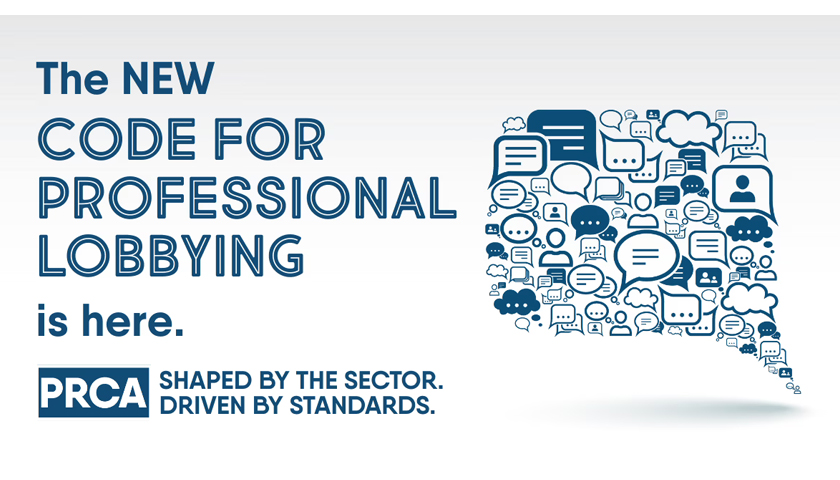The PRCA has launched the PR and Communications Census 2018, which reveals that the UK PR and communications industry is worth £13.8bn, showing growth of 7% since 2016 when it reached £12.9bn. The Census is produced in conjunction with PRWeek and global market research agency Norstat.
The PR and Communications Census 2018 also revealed that there is a total of 86,000 employees. This is a steady increase from 2016, when there was a total of 83,000 employees.
Key figures:
– Diversity in the industry has improved slightly and the industry is marginally less white and British today compared to two years ago. In 2018, the PR and communications industry is 89% White, down from 91%; and it is 86% British, down from 89% in 2016. Encouragingly, younger PR professionals are more likely to be ethnically diverse, with 74% of 25-34-year olds identifying as white, compared to 79% in 2016.
– The gender pay gap is 21%, which has increased by 3.2% since 2016. This is despite the fact that women make up 66% of the industry. However, there has also been a 7% increase in female Managing Directors since 2016.
– The Barcelona Principles 2.0 are the preferred evaluation method, with 24% of PR and communications professionals using this evaluation method, a slight increase from 2016, when 23% of PR professionals were using this method. 12% of PR and communications practitioners still use AVEs, although this has decreased from 16% since 2016.
– Agency work in retail and wholesale PR has dropped by 7% this year. Technology and consumer services are once again the dominant sectors; however, consumer is growing at a slower rate (-3%). Technology continues to grow at the same rate as in 2016 (29%).
– PR and communications professionals continue to work beyond their contracted hours – they work 10 more hours a week than their contracted 35 hours. Flexible working patterns have also increased and the number of PR professionals working from home has increased by 9% this year.
– The highest paid salaries are found in the finance sector across agency (average: £53,428) and in-house (average: £60,952) roles. The lowest paid agency salaries are found in the automotive sector (average: £35,890) and the food, beverages, and tobacco sector (average: £37,690) for in-house roles. The average salary across the industry is £45,950.
Launched today, the PR and Communications Census 2018 is the most comprehensive and authoritative analysis of the PR and communications industry, developed by the PRCA in conjunction with PRWeek and global market research agency Norstat.
Francis Ingham MPRCA, Director General, PRCA, said:
“The PR and Communications Census data confirms what we already know: the PR and communications industry is thriving, and I have no doubt that it is poised for even further growth in the future. Salaries are increasing; we are recruiting more employees; individual sectors are performing well, and exceeding expectations.
“While diversity continues to be a problem for the industry, we are starting to see movement in the right direction, and that should be welcomed. However, the industry must be even more proactive. We launched the Diversity and Inclusion Guidelines to give the industry a roadmap, and the data in the Census shows that we have a long way to go. 2018 will be a defining year for diversity, and we are calling on our industry to do more.
“Finally, the gender pay gap remains a sore subject for the industry. It is disappointing that we are having this conversation in a female dominated industry.
“As an industry, we should proud but not complacent. The PRCA will continue to campaign on these important issues to ensure the industry’s ongoing success.”
Diversity
The PR and communications industry continues to be a female dominated industry: 66% of the industry is female. It is also an overwhelmingly young industry: the average industry practitioner is 29 years old.
Ethnically, the industry is predominantly White British, specifically 89% white and 86% British. Whilst these figures have remained relatively static since 2011, there has been a slight improvement this year considering that in 2016 the industry was 91% white and 89% British. Younger PR professionals are also more likely to be ethnically diverse.
81% of the industry holds an undergraduate degree, and 69% of the industry have been educated at a state-funded or state-run school.
For the first time in the history of the PR and Communications Census, we asked questions about social mobility and whether respondents received household income support or were on free school meals during their school years. 12% of respondents received household income support during their school years and 10% of respondents were on free school meals during their school years.
Opinions
The Barcelona Principles 2.0 are the preferred evaluation method by PR and communications professionals – 24% of the industry claim they use this method. However, 12% of the industry still uses AVEs. Encouragingly, the use of AVEs has dropped by 4% since 2016.
56% of the industry describe PR as a profession, 35% see it as an industry. This represents a 5% shift towards ‘profession’ since 2016.
The leading tasks that have increased in importance are digital, online communications, and reputation management. 56% of the industry believe that digital has increased in importance.
On the other hand, sales promotion, general media relations, and writing articles or newsletters have decreased in importance in the past two years.
What do we do?
The leading duties in the industry are corporate public relations, communications strategy development, general media relations. This is despite the fact that PR professionals believe that general media relations has decreased in importance over the past two years. Reputation management has steadily increased as a main duty this year by 3%.
Technology, consumer services, and business services are the dominant sectors in which PR agencies and freelancers work.
PR and communications agencies are mostly made up of 11-25 people, with an average annual turnover of between £500,000 and £2.5 million. Most in-house PR and communications teams are made up of 2-5 people.
Salaries
The average salary across the industry is £45,950, which is up marginally from £45,100 in 2016.
The average agency salary is £45,865, up from £44,805 in 2016. Salaries have remained similar across job levels since 2016.
The average in-house salary this year is £46,078, up from is £43,591 in 2016.
The average freelancer salary is £50,966, down from £56,789 in 2016.
The highest paid salaries are found in the finance sector across agency and in-house roles, with an average of £57,190. In addition, in-house professionals who work in the energy and business services sectors have some of the highest paid salaries in the industry. For agency professionals, consultants that work on central government (£56,338) and NHS clients (£51,721) are also among the highest paid.
The gender pay gap in the PR and communications industry is 21%, up from 17.8% in 2016. The pay disparity is £11,364, which has increased by £2,253 this year.
Employee Wellbeing
PR professionals continue to work beyond their contracted hours. They work 10 more hours a week than their contracted 35 hours. Senior employees such as Managing Directors and Directors of in-house teams are putting in a lot more hours a week. Unsurprisingly, 41% of PR professionals make work-related calls or answer emails outside of work hours every day of the week.
The preferred form of flexible working is flexitime and working from home one day a week. The number of PR professionals working from home has increased by 9% this year. The ability to work from home is usually reserved for senior employees, who are working significantly more than their contracted hours. 45% of PR professionals who have children also work from home at least once a week.
Links
https://www.prca.org.uk/sites/default/files/PR%20and%20Communications%20Census%202018.pdf


